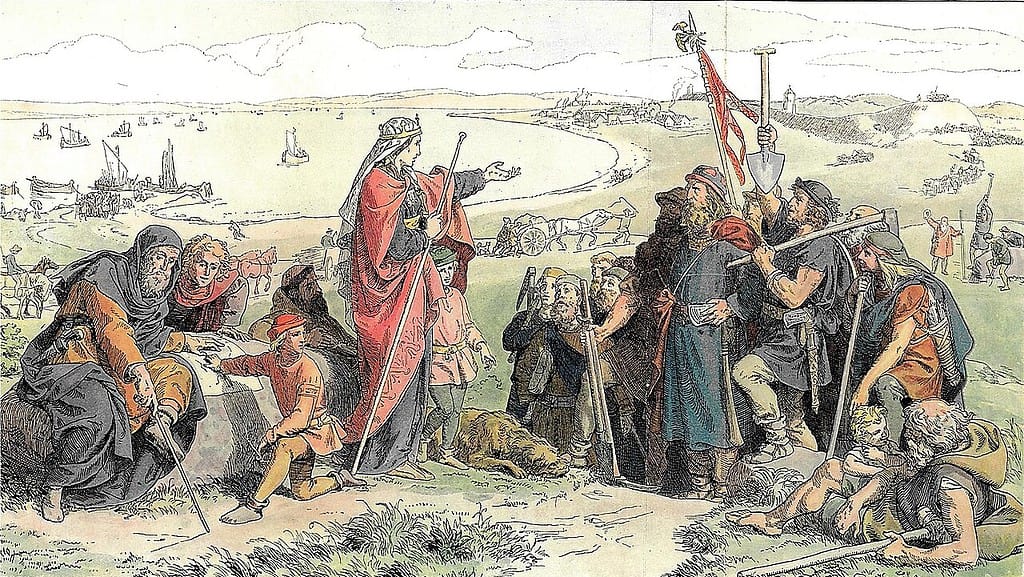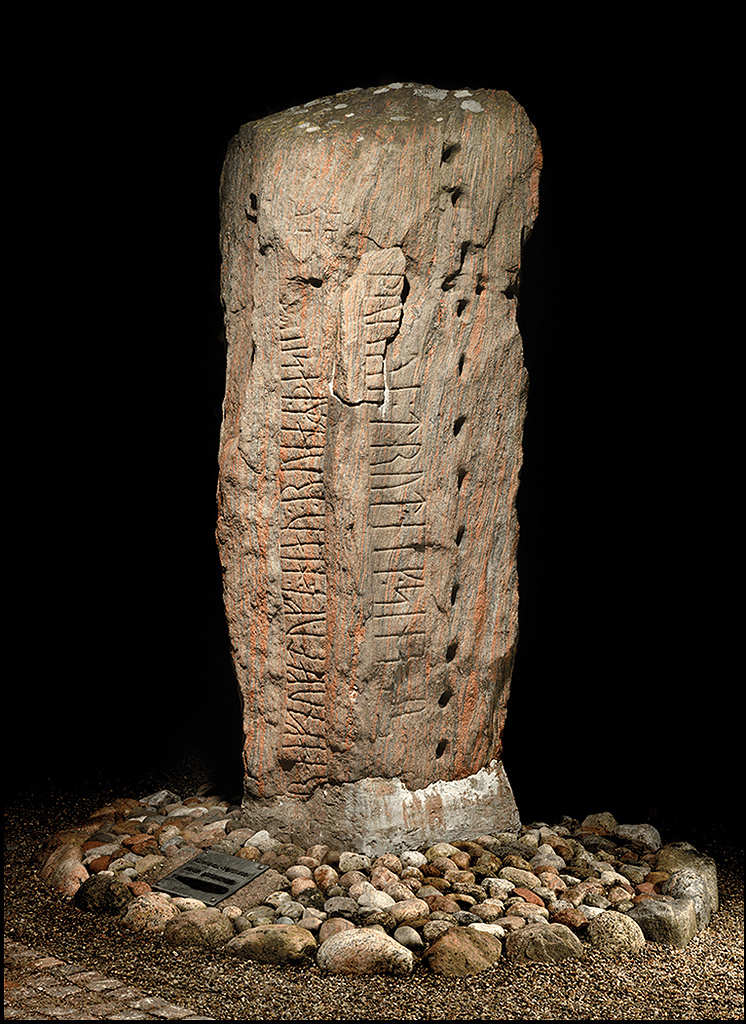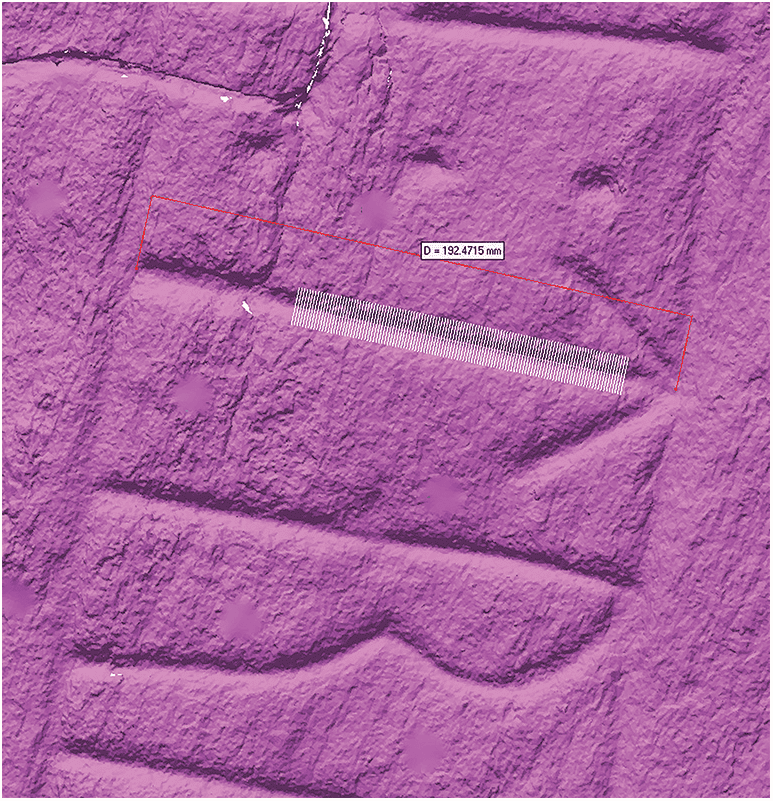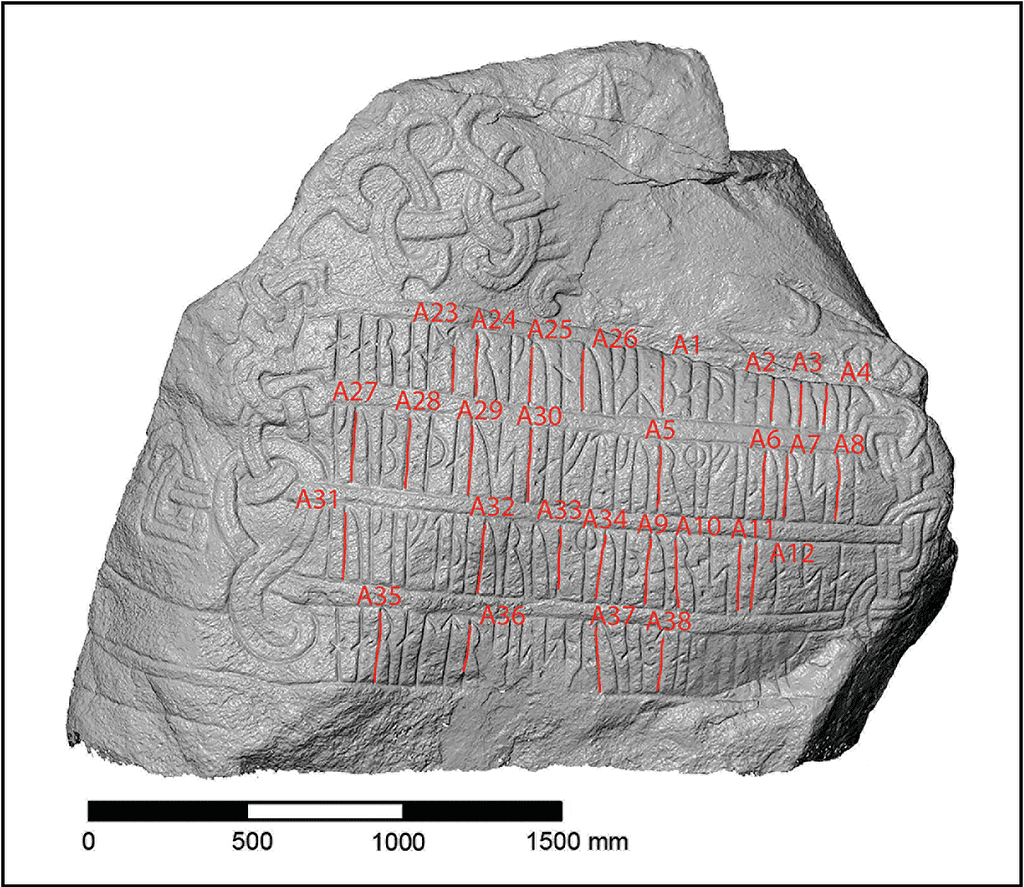
In a striking discovery, 3D-scanning techniques have unlocked clues to the mysterious Thyra of Viking-era Denmark, hinting at her influential role in Viking history. Long overshadowed by the famed ruler Harald Bluetooth (yes, the one Bluetooth tech is named after), the elusive figure of Thyra is now coming to light. The new study suggests that Thyra, Bluetooth’s mother, is celebrated on more runestones than any other individual from that age.
If confirmed, this not only reshapes our understanding of Viking-age Denmark but also underscores the often-overlooked power and influence of women in Viking society.
Thyra the Ruler
Vikings were seafaring Norse people who originated in the Scandinavian area (today’s Norway, Denmark, and Sweden). The Vikings are known for raiding and trading, but their history is rich and elaborate as well. In particular, Viking state formation (around the years 800–1050 AD) was an important moment in European history.

Harald Bluetooth (911-985), son of King Gorm and Queen Thyra is a key figure in this process. Bluetooth is more famous nowadays because of the Bluetooth wireless technology. This name for the technology was based on a metaphor: that it would unite computers and other devices just like Harald Bluetooth united the tribes of Denmark into a single kingdom.
But Thyra herself may have been even more impactful.
Thyra is usually mentioned as a woman of great prudence. She is one of the very few women mentioned in both legend and historical sources. She is sometimes mentioned by historical sources as the daughter of an English king, but the Norse sagas place her as the daughter of a legendary king.
It is clear, however, that Thyra was an impactful queen. She is believed to have led an army against the Germans. Saxo Grammaticus, a 12th-century historian, wrote that Thyra was mainly responsible for building the Danevirke, a system of fortifications on the southern Danish border, and subsequent archaeology confirmed Thyra’s role in developing the Danevirke. Yet her role in Viking history could have been even greater.
Finding Thyra

Researchers studied two groups of runestones known as the Jelling and Ravnunge-Tue stones. The stones both mention Thyra, but whereas one is clear about what Thyra they’re talking about, the other is a bit more vague.
There are two Jelling stones: one smaller stone was erected in Thyra’s honor by Gorm, her husband. The other, larger stone, was raised by Harald to commemorate both parents.
The Ravnunge-Tue stone that mentions Thyra reads: “Ravnunge-Tue carved these runes in memory of Thyra, his queen.” But according to the Viking Ship Museum, the term “queen” could have also applied to a wife or mistress, and Thyra was a relatively common name at the time. “So maybe it was just the case that Tue was married to a Thyra,” the museum website states.
So researchers wanted to see if the Thyra on the rune is the Thyra.
“We wanted to see if we could find the same rune carver on some of these stones so that we could connect the Ravnunge-Tue stones with the Jelling stones,” said Lisbeth Imer, an archaeologist at the National Museum of Denmark and the study’s lead author, in an Antiquity release. “If there was a connection, it would be highly likely that all the stones referred to the same woman, Thyra, mother of Harald Bluetooth.”
The archaeologists used 3D scanners to analyze the shape and depth of the runes and the carving techniques used to make them. They also looked at modern runes made by modern stoneworkers to better understand how the ancient ones could have been made.

The team concluded that the stones referring to ‘Thyra’ were carved by the same person. It would be one hell of a coincidence that the same person who wrote about ‘Thyra the queen’ also had a lover called ‘Thyra’.
Instead, researchers conclude that the ‘Thyra’ mentioned on those stones was likely one and the same.
A powerful Viking woman
This makes Thyra one of the most cherished Viking historical figures. No other Viking man or woman in Denmark has been mentioned on that many runestones.
“If we accept that runestones were granite manifestations of status, lineage and power, we may suggest that Thyra was indeed of royal, Jutlandic descent. Both Gorm and Harald refer to her in the runestone texts and Ravnunge-Tue describes her as his dróttning, that is, ‘lady’ or ‘queen’,” the researchers write in the study.
“Combined with the designation of Thyra as Danmarkaʀ bót, ‘Denmark’s strength/salvation’, these honors point towards a powerful woman who held status, land, and authority in her own right. The combination of the present analyses and the geographical distribution of the runestones indicates that Thyra was one of the key figures—or even the key figure—for the assembling of the Danish realm, in which she herself may have played an active part.”
This isn’t the first study to suggest that women played a crucial role in Viking history. A study from a few years ago concluded that a feared Viking warrior was actually a woman. In addition, Viking women generally appear to have had more freedom than women elsewhere, as illustrated in Icelandic writings. The liberties and impact of the Viking women gradually disappeared after the introduction of Christianity, and from the late 13th century, women were no longer mentioned.
But Thyra’s legacy, illuminated by this research, highlights the indelible mark that Viking women left on history. It’s a testament to the power and influence women held, even in societies that are often predominantly remembered for their male warriors and kings. By uncovering and piecing together the fragments of her story, the research underscores the importance of re-evaluating history with a keen and open eye, ensuring that the contributions of all, irrespective of gender, are acknowledged and celebrated.
The discovery around Queen Thyra not only deepens our understanding of Viking-era Denmark but also challenges modern perceptions of Viking society.
The study was published in Antiquity.


